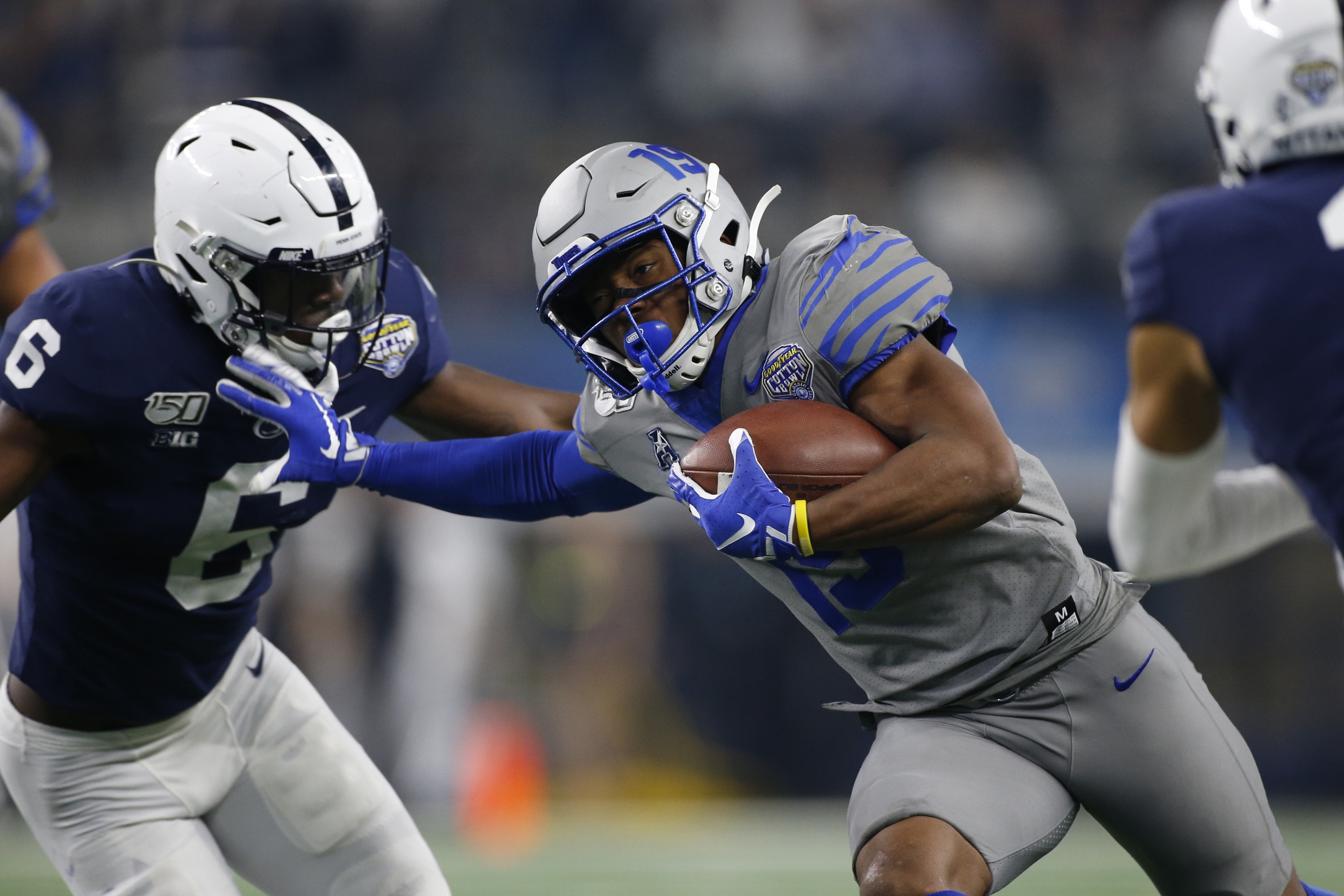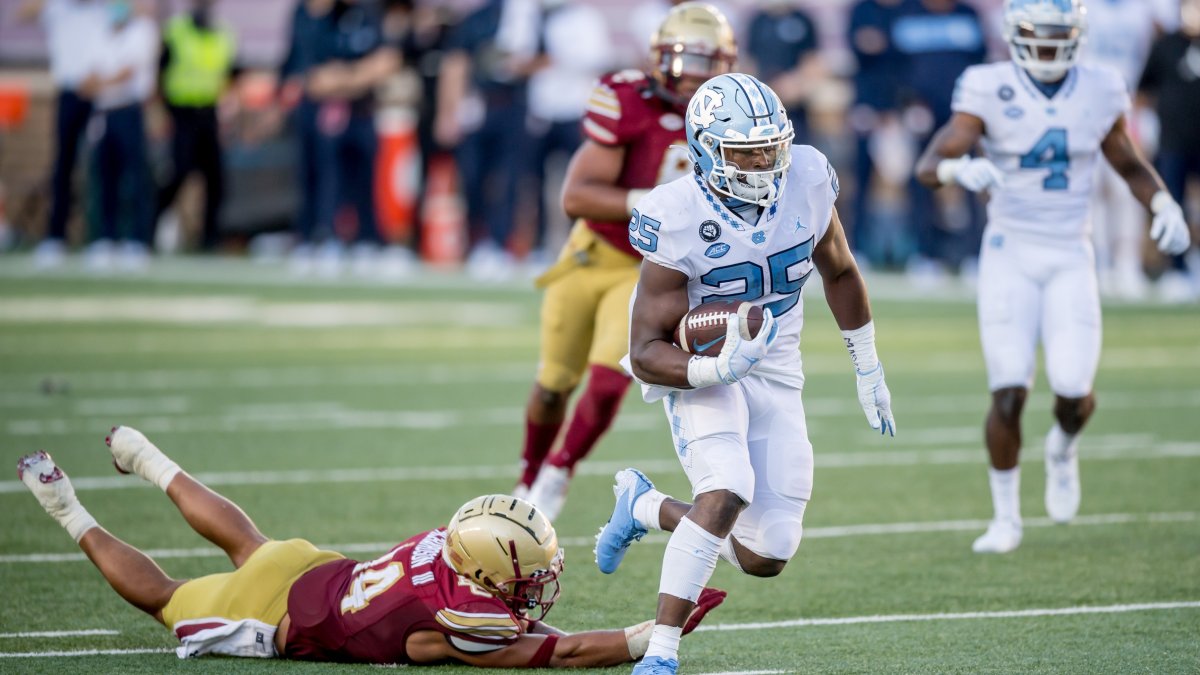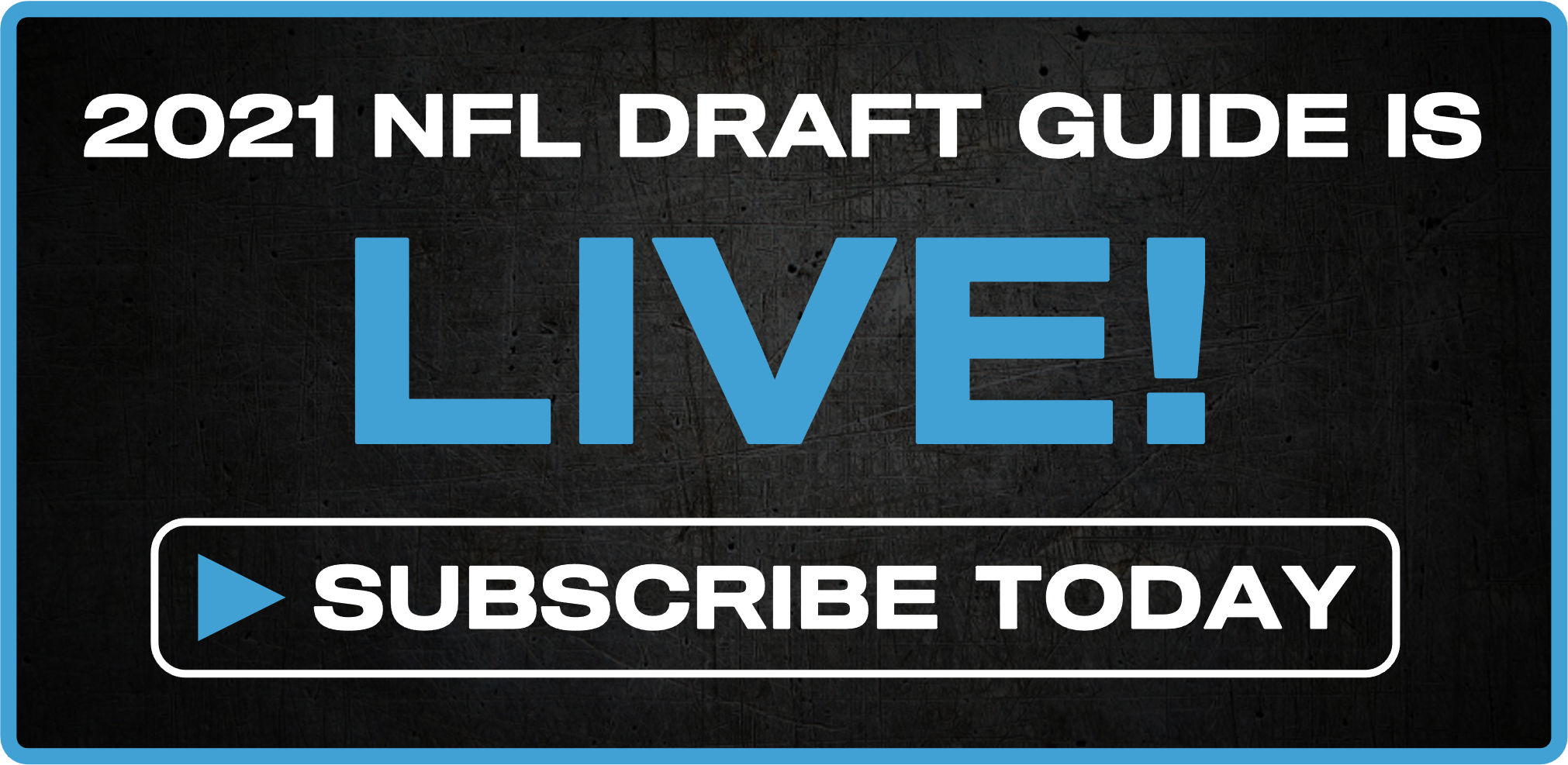The NFL's free agency frenzy surprisingly had a minimal impact on the state of the running back position across the NFL landscape. Aaron Jones re-signed with the Packers. Chris Carson will continue to be established by the Seahawks. Lombardi Lenny returned to the Bucs. Even the great David Johnson restructured his contract to stick around on the Texans. The biggest offseason player movement at the position came from Kenyan Drake heading to the Raiders and Mike Davis flying off to the Falcons.
However, there are still several murky NFL backfields with varying levels of uncertainty when it comes to the prospective roles for each running back currently on the roster. With the 2021 NFL Draft quickly approaching, fantasy managers are presented with a valuable opportunity to learn what each team really thinks about the state of its backfield.
What seems like a backfield ripe for opportunity in March can flip over on its head with one draft pick in April. There will be a few teams that select a running back early in the draft, thereby telling us that they are dissatisfied with the running backs on their roster and foresee a real role for the incoming rookie.
The following NFL teams are likely to be searching for a running back in the 2021 NFL Draft. But if they choose to forego the position in the draft, then the incumbents on the roster could become key players in fantasyland next season.
Arizona Cardinals
Projected starter: Chase Edmonds
Backup: Eno Benjamin
Actions speak louder than words, and it is extremely difficult to trust coach-speak this time of year. Just because Kliff Kingsbury is willing to anoint Chase Edmonds as his starting running back in March does not mean this will be the case come September. I mean, Kingsbury has always been completely honest with us about the state of the Cardinals roster, right?
Kliff Kingsbury: “Chase Edmonds is our bell cow RB.”
Also Kliff Kingsbury: pic.twitter.com/WDnxfbi3aB
— Jarad Evans (@PFF_Jarad) March 5, 2021
Kingsbury has talked up Edmonds as the Cardinals' likely starting running back, but count me as extremely skeptical that will be his stance come the start of the 2021 season. Edmonds has never topped 100 carries in a season in his career and possesses just three total career games with double-digit carries. That is not to say Edmonds cannot function as a lead running back (everyone remembers that magical 27-126-3 rushing game in 2019), just that perhaps the Cardinals do not view him as such.
The only other running back on the roster is Eno Benjamin, a seventh-round pick last year out of Arizona State who did not play a single snap in his rookie season. Benjamin flashed in his last two seasons at Arizona State, racking up a combined 2,709 rushing yards and 26 rushing touchdowns, but his inexperience and late draft capital do nothing to inspire confidence in a role on the offense.
The Cardinals are an underrated candidate to spend a Day 1 or 2 pick on one of the top running back prospects. Arizona would be a fantastic landing spot for any rookie running back to inherit the former Kenyan Drake between-the-tackles role that is up for grabs. Javonte Williams would be a perfect fit to capture the bruising role in this offense while Edmonds maintains his receiving role.
Atlanta Falcons
Projected starter: Mike Davis
Backups: Ito Smith, Qadree Ollison
The Falcons made their big splash in free agency by signing Mike Davis to a two-year contract worth $4 million. That contract does not exactly scream starting running back, but Davis’ stellar run filling in for Christian McCaffrey demonstrated that he has the requisite skill set to be an integral part of a running back committee at a minimum. Davis has tallied a 27% missed tackle rate per touch since 2019, tied with Nick Chubb for highest in the NFL. He registered five weekly fantasy finishes as a RB1 last season — if the Falcons enter 2021 with Davis as the lead dog, he will absolutely be worth selecting in the first few rounds of fantasy drafts.
Neither Ito Smith nor Qadree Ollison have demonstrated the skill set to be anything more than a capable backup. Smith averages a middling 3.9 rushing yards per carry and 2.47 yards after contact per attempt for his career. Ollison possesses just 23 career carries to his name.

Accordingly, the Falcons are a prime contender to spend a premium draft pick on one of the elite running back prospects like Travis Etienne or Najee Harris. New head coach Arthur Smith knows a thing or two about featuring running backs in his offense. This is an ideal fantasy landing spot for whichever rookie back is lucky enough to be selected by the Falcons on draft day.
Houston Texans
Projected starter: David Johnson
Backups: Phillip Lindsay, Mark Ingram
The Texans have the lowest projected win total for 2021, which is not exactly what fantasy managers covet when assessing running backs. Exacerbating matters, Houston brought in Phillip Lindsay and Mark Ingram to steal touches away from David Johnson. Though Johnson was anything but the model of efficiency in 2020, at least his fantasy managers could count on him in a bell cow role with a locked-in 15-plus touches every single week. No more in 2021.
The smart decision would be to fade this backfield entirely in 2021. If I had to guess on a player to emerge as the lead back, my bet would be on Lindsay as the youngest of the bunch at 26 years old. He is small at 5-foot-8 and 190 pounds but posted back-to-back 1,000-yard seasons to start his career before dealing with injury problems last season. His 30 runs of 15-plus yards since 2018 rank 13th among all running backs over that stretch. He has also never fumbled in his entire career.
It would be peak 2021 Texans for them to spend one of their few draft picks on a running back. It is not likely, but would we even be surprised at this point? Let’s hope not.
Miami Dolphins
Projected starter: Myles Gaskin
Backups: Salvon Ahmed, Malcolm Brown, Patrick Laird
The upstart Dolphins will be one of the most exciting teams to watch in 2021 after all the improvements they made this offseason. Additionally, they have stockpiled several premium draft picks that will be used to upgrade this roster even further. There is a strong possibility that Miami uses one of those early picks on a top running back prospect, and if that happens this player would instantly possess RB1 upside. A capable pass catcher like Najee Harris, Travis Etienne or Kenneth Gainwell would fit perfectly into this offense.

However, we should also consider the possibility that the newly sharp Dolphins organization would rather spend draft capital on more valuable positions than running back. In that case, Myles Gaskin would reclaim his bell cow role as the lead running back in this Dolphins offense. Gaskin tallied double-digit fantasy points in nine of his 10 games last season, and he would possess RB1 upside should the Dolphins forgo adding another running back in the draft.
Gaskin makes a phenomenal target in best ball drafts right now, as he can be drafted in the middle rounds but maintains a RB1 ceiling if the NFL draft breaks right for him and the Dolphins fortify other positions besides running back.
New York Jets
Projected starter: Tevin Coleman
Backups: Ty Johnson, La’Mical Perine, Josh Adams
Of all the teams on this list, the Jets present the most likely situation where a rookie running back could step in on Day 1 and become the unquestioned bell cow. Though the offense and situation are rather middling, opportunity and volume would transform a Najee Harris or Travis Etienne into an impact fantasy performer — think rookie season Josh Jacobs from 2019.
None of the running backs currently on the roster inspire any confidence in their ability to emerge as a valuable lead back. I will give the nod to offseason signee Tevin Coleman, who new head coach Robert Saleh is very familiar with from his days in San Francisco. Coleman dealt with a myriad of injuries last year in playing just six games, but he was a key cog in the 49ers offense during their run to the Super Bowl in 2019. He should be the leader of this committee for as long as he can stay healthy.

Ty Johnson flashed at times last season, with his highlight being a monster 22-104-1 rushing performance against the Raiders in Week 13. He averaged a respectable 4.7 yards per carry but failed to generate additional yardage other than what was blocked, averaging 2.26 yards after contact per attempt. In a hypothetical committee, Johnson would probably be the 1B to Coleman’s 1A.
New York drafted La’Mical Perine in the fourth round last year, but he failed to show much juice in his limited action. Perine surpassed 15 yards on just one of his 64 rushing attempts, recording a pedestrian 3.6 yards per attempt and 2.48 yards after contact per attempt. He could potentially be a factor in a committee but will be hard-pressed to emerge as the guy among the players currently on the roster.
Pittsburgh Steelers
Projected starter: Benny Snell Jr.
Backups: Anthony McFarland Jr., Jaylen Samuels, Kalen Ballage
Up until last season, the Steelers had long featured their starting running back as a bell cow in one of the most fantasy friendly roles in the entire NFL. Then 2020 happened. James Conner could not stay healthy. The offensive endured major run-blocking woes (PFF’s 31st-ranked run-blocking unit). And the Steelers all but abandoned the running game by the latter half of the season: From Week 10 on, Pittsburgh’s 72% pass-play rate was the highest in the entire NFL.
The Steelers offseason to this point hints that their pass-heavy ways will continue in 2021, with the re-signing of Ben Roethlisberger and JuJu Smith-Schuster indicating where their priorities lie. They have demonstrated little interest in bringing back Conner or upgrading the running back position via free agency with an impact player (nothing against Kalen Ballage). If anything, the Steelers 2021 offseason suggests that they are comfortable with their current stable of running backs and will probably not spend an early-round draft pick on another body to compete with their current players.
Assuming the Steelers head into next season with the current status quo, then Benny Snell is the prohibitive favorite to lead what will probably be a frustrating running back by committee. Snell was the first man up when Conner went down in Week 1 last season and responded by shredding the Giants to the tune of a 19-113 rushing line. He tallied 16 carries in Week 12 and 18 carries in Week 15, which reveals that the Steelers are comfortable leaning on him when necessary.
McFarland topped out at six carries in his rookie season, and at 5-foot-8 and 193-pounds he does not possess the frame of a lead running back. Ballage signed a cheap one-year contract, and the Steelers may view him as viable committee back after he split work with Austin Ekeler last season. Ballage surpassed 15 carries three times last season, though he averaged a pedestrian 3.3 yards per attempt.
If the Steelers spend a Day 1 or 2 draft pick on a running back, then this player would instantly jump to the forefront of this backfield. However, Pittsburgh’s backfield is probably too crowded for a late-round pick to make an instant impact early in the season.




 © 2024 PFF - all rights reserved.
© 2024 PFF - all rights reserved.